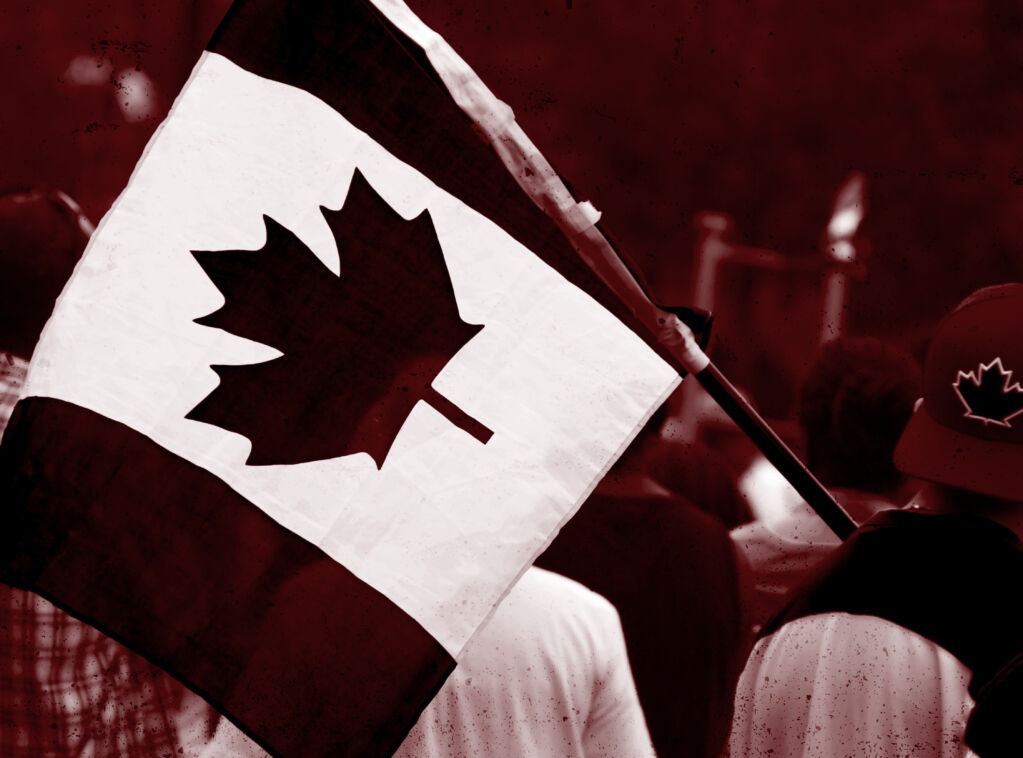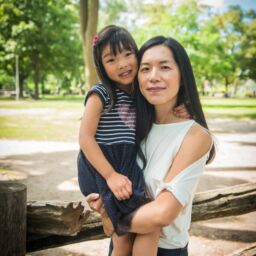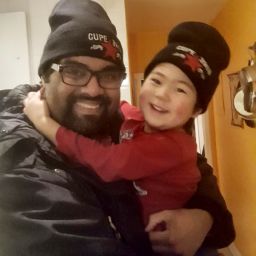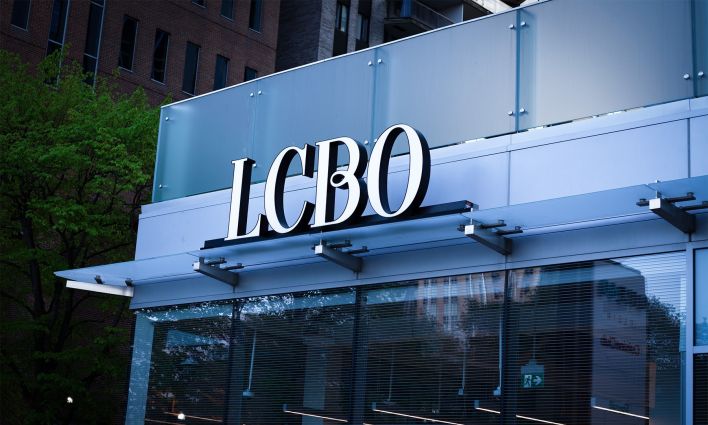From our earliest childhood memories, each of us can recall times when we endured racial taunts, harassment and, in some instances, overt racial violence. Whether it was from seemingly benign children’s rhymes or the proverbial “Go back to where you come from,” our lives have been, and continue to be, etched with the idea that we are perpetually foreign.
As we grew older, we saw that the overt racism we faced went beyond the surface. We came head-to-head with multiple layers of systemic and institutional racism, which reinforced the idea that we did not belong. At our dinner tables, our parents whispered anger and resentment for being told their English was not good enough to be hired, or for being denied promotions or subjected to racial taunts in the workplace. Worse still, our parents who became sick or injured saw their lives spiral further into poverty. We saw first hand how the so-called Canadian dream was, in fact, a series of nightmares for our communities.
Racism and the pandemic
Not much has changed since our childhoods—in fact, it seems to have become worse. Recently, Statistics Canada released data on police-reported hate crimes in Canada. The findings show that “Between 2019 and 2020, the number of police-reported crimes motivated by hatred of a race or ethnicity increased 80%.”1 Additionally, crowdsourced data collected from over 43,000 Canadians revealed that, since the advent of the COVID-19 pandemic in Canada, 30% of Chinese, 27% of Korean and 19% of Southeast Asian participants felt there was an increase in the frequency of harassment or attacks based on race, ethnicity or skin colour as a result of COVID-19.2
The surge in anti-Asian racism continued upwards in 2021, as revealed by new findings published in March 2022 by the Chinese Canadian National Council Toronto Chapter and Project 1907.3 Over the course of 2021, there was a 47% increase in racist incidents that were reported, compared to the preceding year. In particular, incidents involving South Asian and South-east Asian people increased dramatically, by 318% and 121%, respectively. Women were involved in two-thirds of all cases with nearly 75% of reported incidents involving male and white offenders/perpetrators.4
As a consequence, racialized people considered their neighbourhoods to be less safe during the pandemic. Black, Indigenous and racialized people also experienced lower levels of confidence in the police and higher levels of discrimination.5
Hate crimes only scratch the surface of the multiple forms of racism that racialized communities have endured during the pandemic. Our experiences were overlooked by many with general statements like
“We’re all in this together,” when the exact opposite occurred. A study conducted by the Canadian Centre for Policy Alternatives reveals that over the period of July 2020 to June 2021, 28% of Indigenous house-holds and 31% of racialized households experienced economic insecurity on average, compared to 16%
of white households.6 The report also states that “Racialized workers bore a disproportionate burden during the pandemic in two ways: they were more concentrated in industries that were most likely to suffer job losses from the pandemic and they were more concentrated in frontline occupations at high risk of infection.”7 As such, the pandemic merely illuminated and further exacerbated existing societal and systemic discrimination faced by racialized communities—especially racialized women, gender diverse and non-binary people.
Racism did not begin nor will it end with this pandemic.
After the massacre of six Asian women in Atlanta in March 2021, ACLA worked with community partners to organize solidarity rallies attended by thousands in Toronto and Vancouver to send a strong message against racism and white supremacy. Knowing in-person community meetings were impossible, ACLA organized a series of online events to counter racist ideology. Virtual organizing was critical during the pandemic to break the isolation and anxiety that many people felt. Those who attended our events spoke freely of the fear they faced being Asian during the pandemic.
ACLA’s organizing was also premised on building solidarity with other communities in struggle. We wanted to disrupt the model minority myth by examining anti-Asian racism in the context of anti-Black racism and the struggles of Indigenous communities. We are conscious that in times of crisis, it is easy to look internally and turn towards the same systems of oppression. The violence inflicted against us cannot be resolved by targeting and criminalizing other racialized communities. Our efforts must not be based on competition amongst one another, but instead we must challenge existing power frameworks that divide working-class communities. Our organizing is premised on dismantling systems of oppression rather than empowering them.
Racism did not begin nor will it end with this pandemic.
As many mainstream commentators attempt to historicize current forms of injustices, we want to connect it to the multiple deep-seated forms of racism that have particularly impacted Asian Canadians, who are the scapegoats of this pandemic and continue to be seen as the perpetual foreign other. From its inception, the Canadian settler state has been built on violence against Indigenous, Black and racialized communities. The question arises: how do we counter the existing mainstream narrative of Canada to rupture the myth and under-telling of the real history of violence and exclusion that has left out many of our voices?
Whose histories?
As marginalized settlers, knowing our own histories is necessary to navigate the journey towards justice and liberation. History is often presented to us as an official and immutable account—one that is rarely written by our own ancestors. That history will not give us power. Knowing our own truth is powerful in that it grounds us historically and orients us in the right direction to further the struggle, while honouring and building upon past endeavours.8
The exclusion of racial minorities riddles the history of Canada’s labour movement. Those who fought to obtain positions within labour not only struggled for ;anti-racism initiatives but for improvements for all workers. A prime example is the case of South Asian activists in British Columbia during the early to mid-20th century, who were connected to the Ghadar movement.9 Despite facing discrimination and barriers to participate in the labour movement, their alliance with the B.C. left was enriching, adding an international outlook that was also anti-imperial and anti-capitalist. Combined with strong political organizing and an ethos of community care, they successfully mobilized and contributed greatly to the improvement of sawmill and farm workers. Many of the latter group were women. It can be argued that a living legacy has since opened the door for other marginalized settlers to participate in B.C.’s labour movement—one that must now confront racism as part of its mandate.
The entire labour movement must confront the role of white supremacy embedded in the institution of the labour movement.
Beyond the representation rainbow and EDI (Equity, Diversity and Inclusion)10
Authentic diversity requires those in positions of power to not only reflect diverse characteristics on a superficial level, but that they actually represent marginalized communities by being in community and relationship with them. Meaningful equity demands that the leadership reflect its base: be it membership, workforce or society at large. True inclusion welcomes marginalized folks to show up as their full selves with the ability to express their cultural and spiritual practices. Real justice means those in power also espouse and enact anti-oppressive beliefs and not simply be tokens upholding white supremacy values and culture.
Liberation for any settlers on largely stolen and unsurrendered lands will always be premised on the liberation of Indigenous peoples. Even though our liberation is bound together, it would be disingenuous to elide or make light of the differences, nuanced or stark, between and within Indigenous nations, Black peoples, and settlers of colour.11
Honest EDI work is fundamentally political. It behooves us to engage collectively in political processes in order to redistribute power and resources. The evaluation of the efficacy of EDI work can be simple: Did it result in actual policy changes? Did it allow more racialized people to show up in their full identities? If not, how broadly and deeply engaged are those who stand to benefit from such changes? If the engagement increased and sustained collective agency, as well as transparency, accountability, and participation in institutional processes, then EDI work will have achieved something worthwhile.
Otherwise, grassroots members who defer to experts (i.e. professional consultants) to do the work will never see it done, for this work is almost always paid for by institutions, whose impulse is to conserve the neoliberal interest to keep individuals isolated with limited power and agency to effect systemic change. Even long-established, systemically entrenched EDI tools like employment equity plans fail when they are implemented in this same neoliberal interest and as an end instead of a tool. These initiatives and tools alone do not make a workplace anti-racist.
Role of unions, the Freedom Convoy and extremism
From a labour perspective, unions play a crucial role in educating the rank-and-file to create a more progressive culture. After all, one can experience discrimination from the boss as much as from one’s co-workers. Unions can also bargain for anti-racism to be codified in collective agreements and translated into policies and procedures that in turn, can have real impacts in practices. Advocacy (e.g. lobbying at the governmental level), mobilization (e.g. campaigning in conjunction with labour partners) and organizing (e.g. building and maintaining relationships between the rank-and-file) are tools to help effect social and political change.
One area we want to focus on is the rise of right-wing extremism in the labour movement. The Freedom Convoy confirmed existing suspicions many of us had held about members of our own house of labour. Leaked financial records revealed many elected officials, staff and rank-and-file members as contributors to the convoy. Public social media posts also illustrate the xenophobic and racist beliefs held by some union members with power. However, we cannot simply look at these actions as the beliefs of a few individuals. The entire labour movement must confront the role of white supremacy embedded in the institution of the labour movement. We have a central role in combatting the rise of the far right and stamping it out once and for all. It is necessary to confront imperialism, fascism, and white supremacy head on. We need an open dialogue in the house of labour that requires more than press releases or statements from elected officials. It requires resources dedicated to tough conversations with members about the role that white supremacy has played in dividing workers right from the inception of the labour movement.
Extremism is playing off the fears of everyday work-ing-class people both regarding economic uncertainty and a fabricated sense of loss of identity and freedoms. Much reflection is needed to examine our own spaces to see how right-wing extremism has entrenched itself in the various structures of the labour movement. We are disheartened that these narrow views have overshadowed the critical discussions about racial justice that captured national and international focus, stemming from the rise in anti-Asian racism, the Black Lives Matter movement and the horrors of residential schools. This consciousness-raising amongst the general public about the role of Canada as a state, and our need to take responsibility for state past actions resulting in today’s exclusionary policies, have been pushed aside. Instead, we are having reactionary conversations regarding individual freedoms and white fragility rather than societal responsibilities.
Fighting for racial justice might feel like an emotional rollercoaster. We win and we lose, often feeling like we moved one step forward, but took two steps back. However, we see many signs of hope, led by workers impacted most by the pandemic. Women, Indigenous and racialized workers are standing up and fighting back. Workers at Amazon, Starbucks, campus workers, gig workers and precarious workers in multiracial workplaces are organizing, countering the growth of racism by working collectively to improve their lives and working conditions. These struggles are a beacon of light during some very tough and difficult times.
As we continue to organize, we realize this struggle is not just within our lifetime. It continues with what our elders have instilled upon us so we can build on the struggle and in turn share the same lessons we have learned with future generations. It is essential that our children and those coming after us are equipped with the tools—both historical memory of what occurred in the past and the struggles that are happening today—so that we are not caught in a vicious cycle of repeating the mistakes of the past. If we are to confront fascism, white supremacy and the rise of the far-right, then we have to learn what the elders have taught us and modify and apply the lessons from the past to current and future struggles.
To learn more about the Asian Canadian Labour Alliance, please visit www.aclaontario.ca or Facebook @AsianCanadianLabourAlliance.Header image photo credit:














